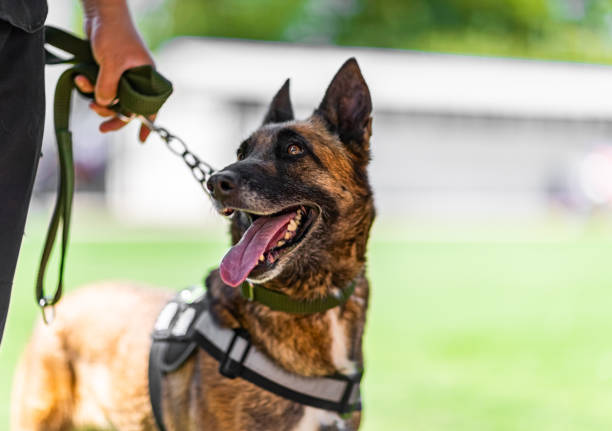Intriguing Insights into the Sensory World of Sniffer Dogs
Sniffer dogs, also known as detection or search dogs, have been instrumental in various fields, from law enforcement and security to healthcare. Their remarkable olfactory abilities set them apart from other canines, enabling them to sniff out drugs, explosives, disease, and even missing people. This article delves into the fascinating realm of sniffer dogs, tracing their history, their current applications, and potential future uses, along with the science behind their extraordinary sense of smell.

The History of Sniffer Dogs
Sniffer dogs have a rich history tracing back to ancient times when they were used for hunting due to their keen sense of smell. However, it was not until World War II that their potential for detection purposes was truly realised. The U.S. military trained dogs to detect mines, traps, and enemy soldiers, which played a significant role in the success of various operations. Post-war, these talented dogs were employed in civilian roles, particularly in narcotics and explosives detection.
Sniffer Dogs Today: More than Just Crime Fighters
While law enforcement and military use remain key areas for sniffer dogs, their roles have significantly diversified over the past decades. Today, these olfactory experts are being trained to sniff out a variety of substances and conditions, including bed bugs, certain types of cancer, and even COVID-19. In fact, a recent study showed that sniffer dogs could detect lung cancer with an accuracy rate of 97%, opening up possibilities for early detection and treatment.
How Do Sniffer Dogs Work?
A dog’s sense of smell is estimated to be between 10,000 to 100,000 times more sensitive than a human’s, thanks to their 300 million olfactory receptors (compared to a human’s measly 6 million). These dogs can also separate scents, enabling them to detect a specific smell amidst a cacophony of odours. This remarkable ability is harnessed through vigorous training, where dogs are rewarded for identifying the target scent, reinforcing the behaviour.
The Economic Impact of Sniffer Dogs
The market for sniffer dogs is vast and varied, with demand spanning across sectors such as law enforcement, healthcare, pest control, and even entertainment. While prices for trained sniffer dogs can range anywhere between $7,000 to $25,000 depending on their skills, the return on investment can be significant. For instance, in healthcare, early disease detection can lead to timely treatment, potentially saving millions of dollars in healthcare costs.
The Future of Sniffer Dogs: New Frontiers
As research continues to uncover the remarkable capabilities of sniffer dogs, new opportunities are emerging. For example, conservationists are now training dogs to detect invasive species or locate endangered animals, a non-invasive method to monitor wildlife populations. Furthermore, technological advancements are looking at replicating the canine olfactory system, leading to the development of artificial “electronic noses”. However, despite these technological strides, it’s unlikely that man-made devices will completely replace the versatility and efficiency of sniffer dogs anytime soon.
The world of sniffer dogs is truly fascinating, demonstrating how the symbiotic relationship between humans and dogs has evolved over centuries. As we continue to harness the extraordinary abilities of these canines, who knows what other potential applications we might uncover in the future?




